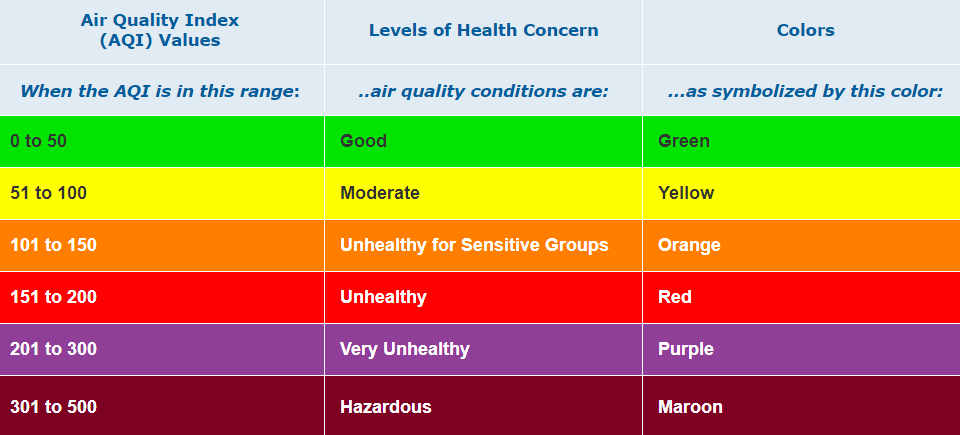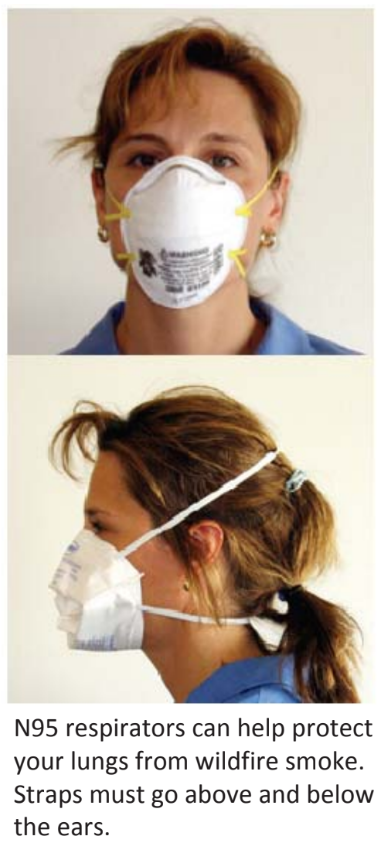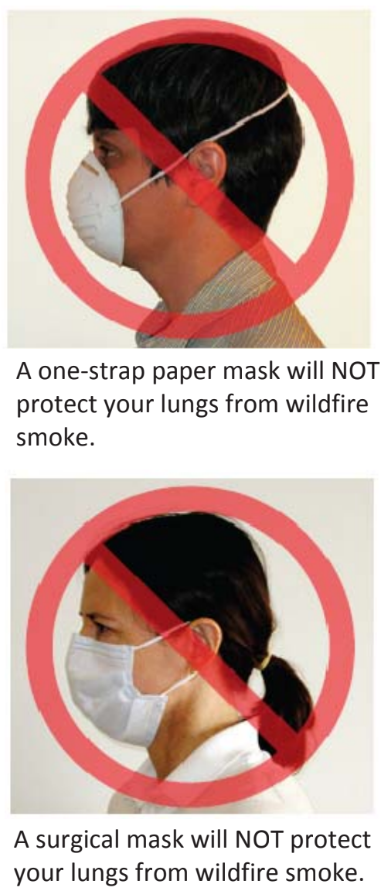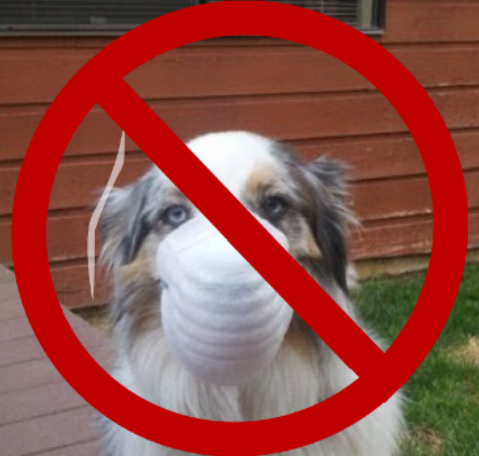USF Air Quality Information
Air Quality Index (AQI)
The AQI is an index which reports the daily air quality information of certain areas. This is calculated based on 5 major air pollutants: ground-level ozone, particle pollution, carbon monoxide, sulfur dioxide, and nitrogen dioxide. Of these 5 pollutants, ground-level ozone and airborne particles generally pose the greatest threat to the general population.
The AQI ranges from 0 to 500, with the higher AQI value corresponding to a higher level of air pollutants. An AQI value of 100 is considered the national air quality standard, with AQI values above 100 considered to be unhealthy for people that are sensitive to air pollutants. AQI values of 200 or higher are typically considered to be the standard at which air quality has become hazardous for the general public. However, it is recommended to limit exposure to air pollutants before the AQI reaches 200.
For more information, visit the EPA AQI information page.
To check the USF Air Quality, visit the EPA's AirNow information page.
Particle Masks
In the event of low air quality, it is recommended that those who are sensitive to air pollutants or expect to be exposed to the air pollutants for an extended period of time wear particle masks.
However, keep in mind that only masks which have been certified by NIOSH (The National Institute for Occupational Safety and Health) can effectively protect you from pollutant particles. A label or statement of certification typically appears on the respirator itself or on the packaging; this certification also describes what the mask is designed to protect you against.
The N95 designation means that the mask blocks at least 95% of small test particles. The N95 respirator is not designed for children or people with facial hair because it is difficult to achieve a proper fit on these individuals. The N95 respirator must have a very close facial fit in order to effectively filter airborne particles.
Keep in mind
- Choose an N95 or N100 mask that has two straps that go around your head. Don't choose a one strap paper dust mask or surgical mask. These masks do not protect you from fine particles.
- Choose a size that fits over your nose and under your chin. It should seal tightly to your face.
- Don't use bandanas or towels or tissue. While these may help with dryness, they don't protect you from wildfire smoke.
- While N95 or N100 masks can protect you from particles, they can not protect you from gases and vapors that are also created by the wildfires.
Mask Instructions
- Place mask over your nose and under your chin, with one strap placed below the ears and one strap above the ears. Adjust the mask so air cannot get through at the edges of the mask.
- Pinch the metal part of the mask tightly over the bridge of your nose.
- The mask fits best on clean shaven skin.
- Throw away your mask when breathing through it becomes difficult, or if it gets damaged or dirty on the inside. Use a new mask daily, if possible.
- Keep in mind that it is harder to breathe through the mask, so take breaks during outside physical activities.
For more information, visit the FDA's page regarding Masks and N95 Respirators.




